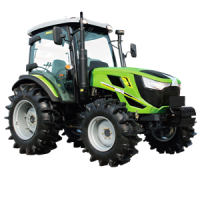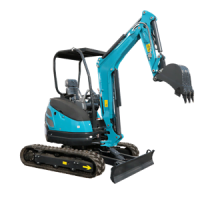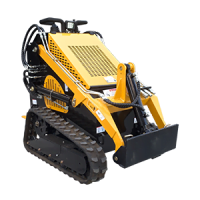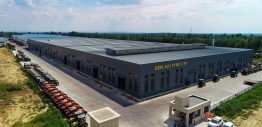Введение
Современный трактор произвел революцию в сельском хозяйстве и позволил добиться невероятных успехов в производительности сельского хозяйства за последнее столетие. В качестве основного оборудования на фермах и ранчо по всему миру тракторы используют мощные двигатели и надежные трансмиссии для перевозки тяжелых грузов и силового оборудования для подготовки земли, посадки, культивации, опрыскивания, сбора урожая и транспортировки.
В этой записи блога мы рассмотрим преобразующее влияние тракторов на сельское хозяйство посредством:
- Краткая история развития трактора
- Основные возможности и преимущества
- Специализированные типы тракторов
- Инновации в тракторной технике
- Выбор правильного трактора
- Будущее тракторов
- Часто задаваемые вопросы
Оценка тракторов как незаменимых «рабочих лошадок», обеспечивающих продовольствием растущее население мира, закладывает основу для последующих разделов, подробно рассматривающих эти универсальные машины.
Краткая история развития трактора

Механизированное сельское хозяйство началось, когда паровые пахотные машины начали заменять конные упряжки в 1850-х годах. Но гусеницы и тросы этих громоздких машин часто повреждали почву. С появлением легкого и доступного Fordson в 1917 году тракторы, подходящие для небольших ферм, заняли прочное положение.
Последовали быстрые инженерные разработки, новые модели могли похвастаться большей мощностью, набором навесного оборудования и комфортом для оператора. Основные вехи включали:
- 1932 – Появляются дизельные тракторы с еще большим крутящим моментом
- 1960-е годы – Гидравлические трехточечные навески облегчают навеску навесного оборудования
- 1970-е годы – автомобили Quadtrack с полным приводом и рулевым управлением обеспечивают превосходное сцепление с дорогой
- 1980-е годы – кабины с климат-контролем и сиденьями с подвеской перенимают стиль автомобилей
Сегодняшние тракторы были бы почти неузнаваемы для фермеров начала 20-го века. Тем не менее, они продолжают развивать это наследие инноваций.
Основные возможности и преимущества

Тракторы имеют множество преимуществ по сравнению с животной силой как предпочтительный основной движитель на фермах:
Мощный – Мощные дизельные двигатели от 20 до 600 л.с. позволяют тяжелому навесному оборудованию прорезать твердую почву и растительные остатки.
Эффективный – Тракторы выполняют полевые задачи быстрее, чем ручной труд, повышая производительность. Системы автоматического наведения еще больше повышают эффективность.
Адаптируемый – Благодаря задним трехточечным навескам, валам отбора мощности и фронтальным погрузчикам тракторы легко присоединяются к широкому спектру навесного оборудования круглый год.
Прочный – Надежные трансмиссии, полноприводные трансмиссии, защитные рамы и устойчивые к коррозии покрытия обеспечивают десятилетия надежной службы в любых условиях.
Комфортный – Тихие, отапливаемые кабины с подвеской, возможностью подключения по Bluetooth и сенсорными экранами обеспечивают производительность и безопасность операторов.
Короче говоря, современные тракторы обладают универсальной мощью для всех видов сельскохозяйственных работ благодаря специализированной конструкции, разработанной с учетом сельскохозяйственных потребностей.
Специализированный Трактор Типы
Модели тракторов имеют различное основное применение в зависимости от их конфигурации:
Тракторы для пропашных культур – Благодаря небольшой ширине передних колес и высокому дорожному просвету пропашные тракторы легко маневрируют по узким междурядьям на обширных полях.
Тракторы общего назначения – Тракторы общего назначения, оснащенные фронтальными погрузчиками и мощностью от 25 до 100 л. с., выполняют различные виды работ: от скашивания и копания до внесения удобрений и уборки снега.
Тракторы высокой мощности – Большие, мощные тракторы мощностью более 225 л.с. тянут массивные посевные орудия и зерновозы по тысячам акров в короткие сезонные периоды.
Тракторы специального назначения – Уникальные разработки, такие как модели для садов с высоким клиренсом или прототипы автономных машин без водителя, соответствуют потребностям особых культур.
Правильно подобранные функции трактора позволяют максимально повысить эксплуатационную эффективность и долгосрочную ценность.
Инновации в тракторной технике
Эволюция тракторов продолжается, и появились некоторые ключевые инновации, в том числе:
Автономное вождение – Тракторные вездеходы следуют по заранее запрограммированным маршрутам GPS без участия оператора, сокращая затраты на рабочую силу и обеспечивая автоматизацию для специализированных культур.
Альтернативные виды топлива – Тракторные двигатели, работающие на метане, или электрические аккумуляторные батареи помогут отказаться от дизельного топлива по мере роста экологических приоритетов.
Связь и анализ данных – Датчики, передающие эксплуатационные показатели в облако, стимулируют развитие новых методов «умного земледелия» с помощью аналитики в реальном времени.
Повышенный комфорт – Кабины продолжат конкурировать с внедорожниками премиум-класса, оснащаясь сиденьями с подогревом/охлаждением, премиальной аудиосистемой и оптимизированным качеством езды для длительных ежедневных смен.
Электрификация – Более высокое напряжение в системе позволит использовать электроприводы для навесного оборудования, что еще больше снизит механическую сложность.
Сочетание вычислительной мощности и инженерной мощи определит следующее поколение тракторов.
Выбор правильного трактора
При таком широком ассортименте марок, моделей, размеров и опций тракторов для покупки идеального варианта необходимо учитывать:
Таблица 1. Основные критерии выбора тракторов
| Особенность трактора | Руководство по выбору |
|---|---|
| Лошадиные силы | Сопоставьте мощность двигателя с ожидаемым самым тяжелым навесным оборудованием |
| Передача инфекции | Трансмиссия или гидростатическая, в зависимости от предпочтений. |
| 2WD против 4WD | Для более тяжелых грузов необходим полный привод, для более легких случаев подходит привод на 2 колеса. |
| Варианты ВОМ | Стандартный, экономичный или двойной ВОМ для питания навесного оборудования |
| Тип гидравлики | Расход гидравлической жидкости с открытым или закрытым центром |
| Категория Hitch | Категории 1–4 поддерживают орудия разных размеров. |
| Дополнительные технологии | Совместимость с телематикой? |
Определение обязательных и желательных функций на основе сельскохозяйственных орудий и рельефа помогает сузить выбор. Демонстрации на месте затем определяют наилучший вариант.
Будущее тракторов
Хотя прогнозы относительно того, как будут выглядеть тракторы будущего и какое топливо будет в них использоваться, различаются, можно выделить некоторые общие точки зрения:
Увеличение автономии – К 2030 году все более распространенными станут тракторы, управляемые автоматически с помощью GPS, что позволит одному оператору контролировать несколько машин.
Интеграция ИИ – Алгоритмы глубокого обучения, обрабатывающие данные датчиков, помогут тракторам адаптироваться к изменяющимся условиям в режиме реального времени.
Приоритет электрификации – Переход с дизельных двигателей на электродвигатели или альтернативные виды топлива ускорится из-за проблем, связанных с изменением климата.
Улучшения подключения – Бесшовная интеграция данных через облачные платформы позволит осуществлять информированное управление парком тракторов, удаленную диагностику проблем и интеграцию тракторов в более широкие «умные» фермерские экосистемы.
В ближайшие десятилетия тракторы превратятся из механических рабочих лошадок в неотъемлемые узлы в цифровых взаимосвязанных сельскохозяйственных системах, однако некоторые знакомые характеристики, такие как долговечность, полезность и комфорт водителя, сохранятся.
Вывод
Тракторные технологии значительно продвинулись с момента зарождения механизированного сельского хозяйства, однако эти машины по-прежнему выполняют свою основную функцию: обеспечивают мощность, тягу и универсальность при выполнении бесчисленных сельскохозяйственных задач.
Понимание современных возможностей тракторов и инноваций является ключевым для владельцев ферм, стремящихся повысить эффективность работы и производительность с помощью оборудования, обеспечивающего основу их средств к существованию. Соответствующим образом подбирая трактор к уникальному сочетанию орудий и имеющихся земель, эти машины продолжат надежно служить сельскому хозяйству в течение многих лет, внедряя более интеллектуальные технологии.
Часто задаваемые вопросы
Каков средний срок службы современного сельскохозяйственного трактора?
Типичный срок службы правильно обслуживаемого трактора составляет 8000–12000 часов. При среднем использовании 800 часов в год это означает 10–15 лет надежной работы.
Все ли сельскохозяйственные тракторы требуют специальной подготовки операторов?
Базовая эксплуатация трактора достаточно проста – особенно модели мощностью менее 40 л. с., используемые для легких работ. Но всем водителям тракторов настоятельно рекомендуется пройти обучение по технике безопасности, сосредоточенное на воздушных линиях электропередач, склонах, дорожном транспорте и навесном оборудовании с ВОМ.
Сколько обычно стоит новый сельскохозяйственный трактор?
Цены на тракторы сильно различаются в зависимости от мощности двигателя, характеристик и предполагаемого использования. Небольшие тракторы мощностью 20 л. с. могут стоить менее $15 000, в то время как большие пропашные тракторы стоят $250 000+, а массивные модели с полным приводом мощностью 400 л. с. приближаются к $500 000.
Стоит ли покупать новый или подержанный трактор?
Подержанные тракторы могут обеспечить огромную экономию средств по сравнению с новыми моделями. Оптимальный выбор зависит от вашего бюджета, желаемых характеристик, толерантности к риску, навыков обслуживания и области применения. Тщательно взвесьте все факторы при принятии решения.





-1.png)